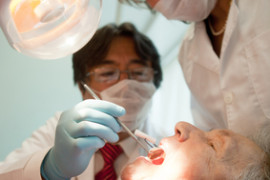Research presented in an article in the Journal of the American Society for Microbiology has added another stone to the mountain of research connecting periodontal disease and heart disease
In the study, researchers infected mice with oral pathogens Porphyromonas gingivalis, Treponema denticola, Tannerella forsythia, and Fusobacterium nucleatum and studied the oral and cardiovascular effects.
These bacteria are the main offenders already associated with adverse health outcomes in humans, including respiratory infections, diabetes, heart attacks, rheumatoid arthritis, pre-term births, and cancer.
After 24 weeks, they noticed a marked difference between the infected mice and the controls. The infected mice had signs of oral inflammation, bone loss, and periodontal disease. They also had significantly higher levels of specific cytokines, and “aortic gene expression demonstrated significant alterations in specific TLR and NLR pathway genes.” Researchers also found oral pathogens in the aortic plaque of the infected mice.
Researchers concluded that those with higher susceptibility to periodontal infection were also more susceptible to that infection spreading systemically. And, while the results are considered preliminary, this study demonstrates an important milestone in the transition toward integrated oral-systemic healthcare.
As the divide between care for the mouth and care for the rest of the body continues to dissolve, we find that studies like this will go down as key moments in raising awareness of the oral-systemic connection.



